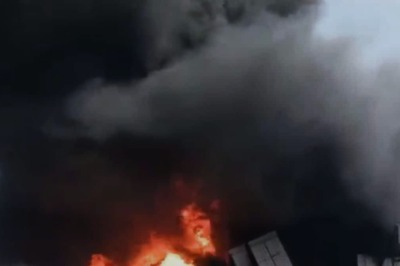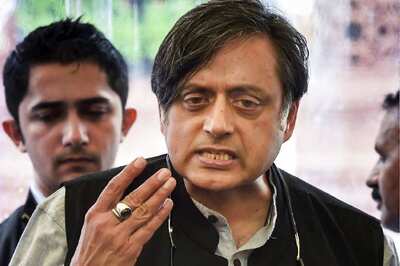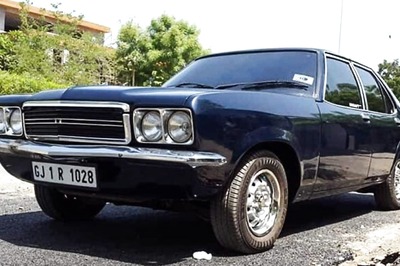
views
For those not well aware of the civilisational history of India and its existential traumas, Prime Minister Narendra Modi’s Mahakal moment in Ujjain would appear to be an act of “Hindu revivalism”, as Jawaharlal Nehru had accused KM Munshi of when the latter was pushing for the restoration of the Somnath temple to its original, pristine glory. It would also incense a large number of pretentious liberals who swear by secularism, little realising that the notion has innate Christian roots and is inherently based on the “specific theological framework that was conceptually conceived of during the Protestant Reformation”, as J Sai Deepak writes in India That Is Bharat.
PM Modi’s Mahakal act will also dismay those born and brought up with the idea of secularism that unapologetically gives the minorities the first access to the nation’s resources, as the Prime Minister Manmohan Singh would say matter-of-factly, and which, as per sociologist TN Madan, “stigmatises the majority as primordially oriented”.
Then, of course, there are Modi’s political and ideological opponents who would see the development through a narrow politico-ideological prism. A tweet from a veteran journalist, closely associated with the previous dispensation, on the day of the inauguration of the Mahakal corridor exposes the divide: “Kuchh TV channelon ne aaj dher saari afeem bechi (Today, some TV channels sold so much opium).”
The fact of the matter is that for the first time in centuries — if one ignores the isolated cases of temple restoration and revitalisation either in the 1950s by the trinity of Sardar Patel, KM Munshi and Rajendra Prasad vis-à-vis the Somnath temple, or Ahilyabai Holkar’s Kashi Vishwanath temple reconstruction work in the 1780s and Maharaja Ranjit Singh sending more than 900 kg for the famed Varanasi temple in the 1830s — there has been a planned and orderly temple restoration work across the country.
Last year, Modi inaugurated the renovated Kashi Vishwanath Mandir complex and corridor. This project, completed in a record time of just over two years, recreated the shrine precinct of the city of Varanasi which, to use Mark Twain’s words, was “older than history, older than tradition, older even than legend”. Varanasi is the oldest surviving city in the world, with a history of continued human habitation going back to more than 5,000 years.
“Twenty-six centuries ago at least, it (Varanasi) was famous, when Babylon was struggling with Nineveh for supremacy, when Tyne was planting her colonies, when Athens was growing in strength, before Rome had become known or Greece had contended with Persia, she (Varanasi) had already risen to greatness,” writes MA Sherring, a missionary and an Indologist who lived in Varanasi and wrote The Sacred City of the Hindus: An Account of Benares in Ancient and Modern Times.
Apart from the Rs 800-crore Mahakal project, which is four times the size of the Kashi Vishwanath corridor, the Kedarnath shrine in Uttarakhand — a ‘jyotirlinga’ site like the previous two — is also witnessing a major renovation and reconstruction work under the Modi dispensation. In November last year, Modi, while unveiling an idol of Adi Shankara at the place of his ‘samadhi’ which was badly damaged during the 2013 flash floods in Uttarakhand, inaugurated several redevelopment projects related to the shrine. Meanwhile, the work on Char Dham all-weather road is underway in Uttarakhand, about which Modi also mentioned during his Tuesday speech in Ujjain.
If one removes the politico-ideological blinkers that often come in the way of seeing a complete picture, Modi’s temple renovation and reconstruction work is a sign of a new India that is at ease with its civilisational past. It no longer is in denial of its roots, though it’s still a long way before distortions in Indian history are totally done away with and the civilisational idea of India is organically understood, appreciated and internalised.
Modi’s battle is two-pronged: Physical as well as psychological. When a civilisation is attacked and almost decimated, the physical signs of its endurance and excellence are selectively targeted and brought down. Some survive because they operate in a filthy, subhuman-like condition. A few others are forced to share space with the invading religion — like the Kashi Vishwanath Temple standing side by side with the Gyanvapi Mosque in Varanasi, or the Shri Krishna Janmabhoomi Temple sharing land with the Shahi Idgah Mosque in Mathura. (Beware! Vested elements may try to push them as symbols of Ganga-Jamuni tehzeeb.)
The Prime Minister has been doing a good job on the physical aspect of the battle, bringing some of the most sacred Hindu temples out of the area of darkness. These temples have been the obvious sign of the wounded civilisation waking up to its glorious past. But the psychological battle is yet to resume in a true sense. History books are still being written from the perspective of invaders. India is still being projected as an eternally virgin land looking for invaders — from Dravidians and Aryans to Muslims and Europeans — to come and populate it. And all this is being taught without an iota of evidence. For, literary evidence in the epics and Puranas suggests an out-of-India migration. And the archaeological, genetic discoveries show the populations of the subcontinent remain unchanged for thousands of years at least.
If the normalisation of the Muslim and European invasions were not bad enough, the Nehruvian dispensation patronised historians who would blatantly pursue historical distortions and negationisms to turn the reality upside down. Thus, a Muslim ruler who is never shy of wearing his religion on his sleeve and whose main motivation has ostensibly been to wage a jihad against the infidels of Hindustan is humanised, secularised and sanitised. A Mahmud of Ghazni and an Aurangzeb would destroy several temples and proudly own these wanton acts of terrorism in the name of religion, but our famed historians would look for the most insane and discredited evidences to prove otherwise.
Oh, Mahmud of Ghazni attacked temples because of their wealth, as Romila Thapar tells us, even at the sea of evidence suggesting how he refused to let go of the Somnath temple even when he was offered all the wealth parked there. And “poor” Aurangzeb, if Audrey Truschke (who is super-active on social media and is a walkie-talkie on all thing India) is to be believed, destroyed the Kashi Vishwanath temple in order to save his citizens from “fleecing” Brahmins. It was, after all, Aurangzeb’s “royal obligations” to “prevent their subjects from being hoodwinked”.
Be that as it may, the fact is Modi has been quite successful in unshackling the physical chains of Hindu coloniality and victimhood. The Prime Minister renovating and reconstructing historic temples and shrines mark a fresh civilisational journey for India that aspires to be new but is inspired to keep the old intact. Nehru’s India missed the opportunity at Somnath in the 1950s. Modi, with his historic projects in Ayodhya, Kashi, Kedarnath and now Ujjain, is ensuring the world’s oldest living civilisation doesn’t forget its ancient roots while pursuing its modern, 21st century aspirations and objectives.
The author is Opinion Editor, Firstpost and News18. He tweets from @Utpal_Kumar1.
Read all the Latest Opinion News and Breaking News here




















Comments
0 comment